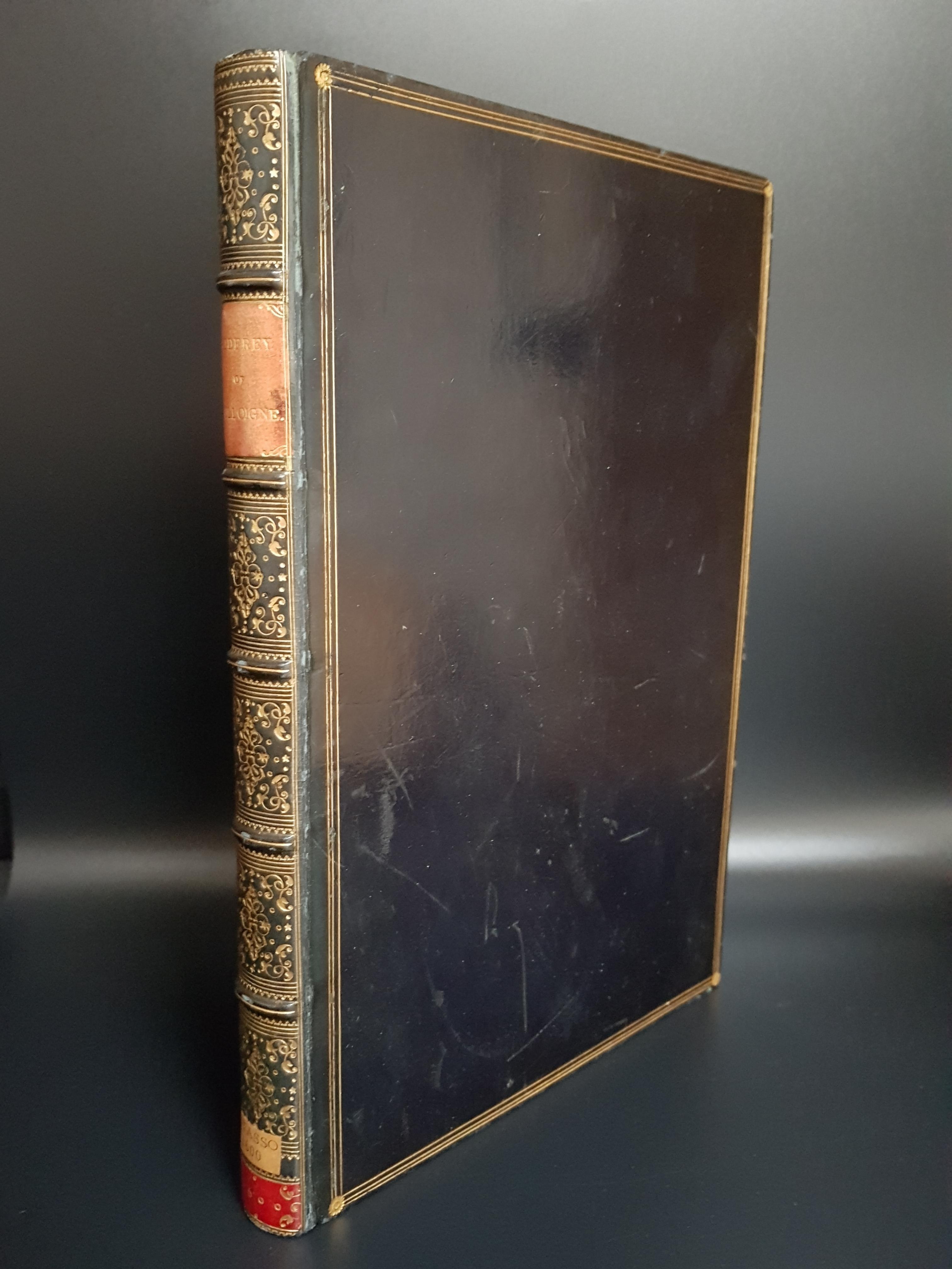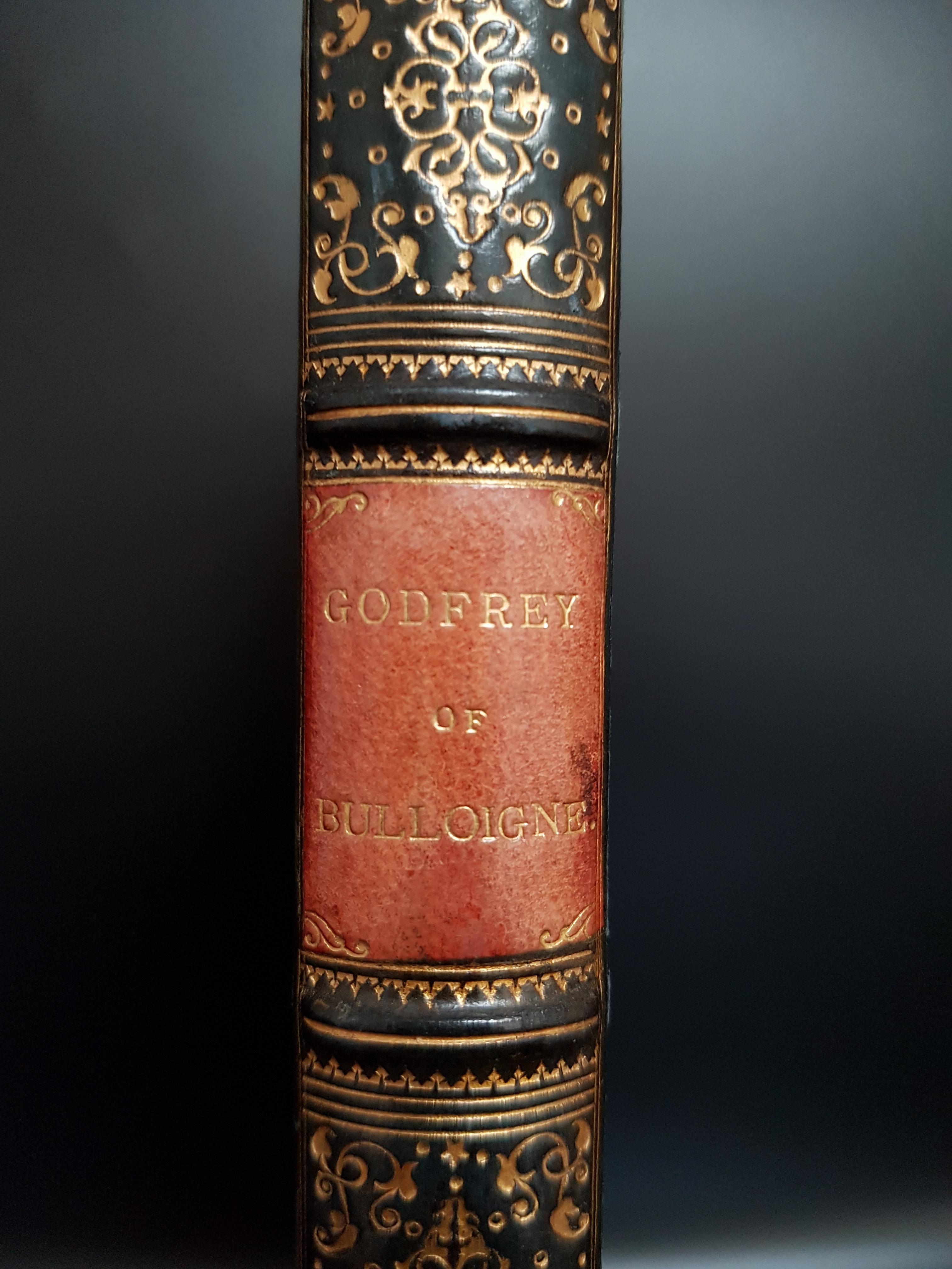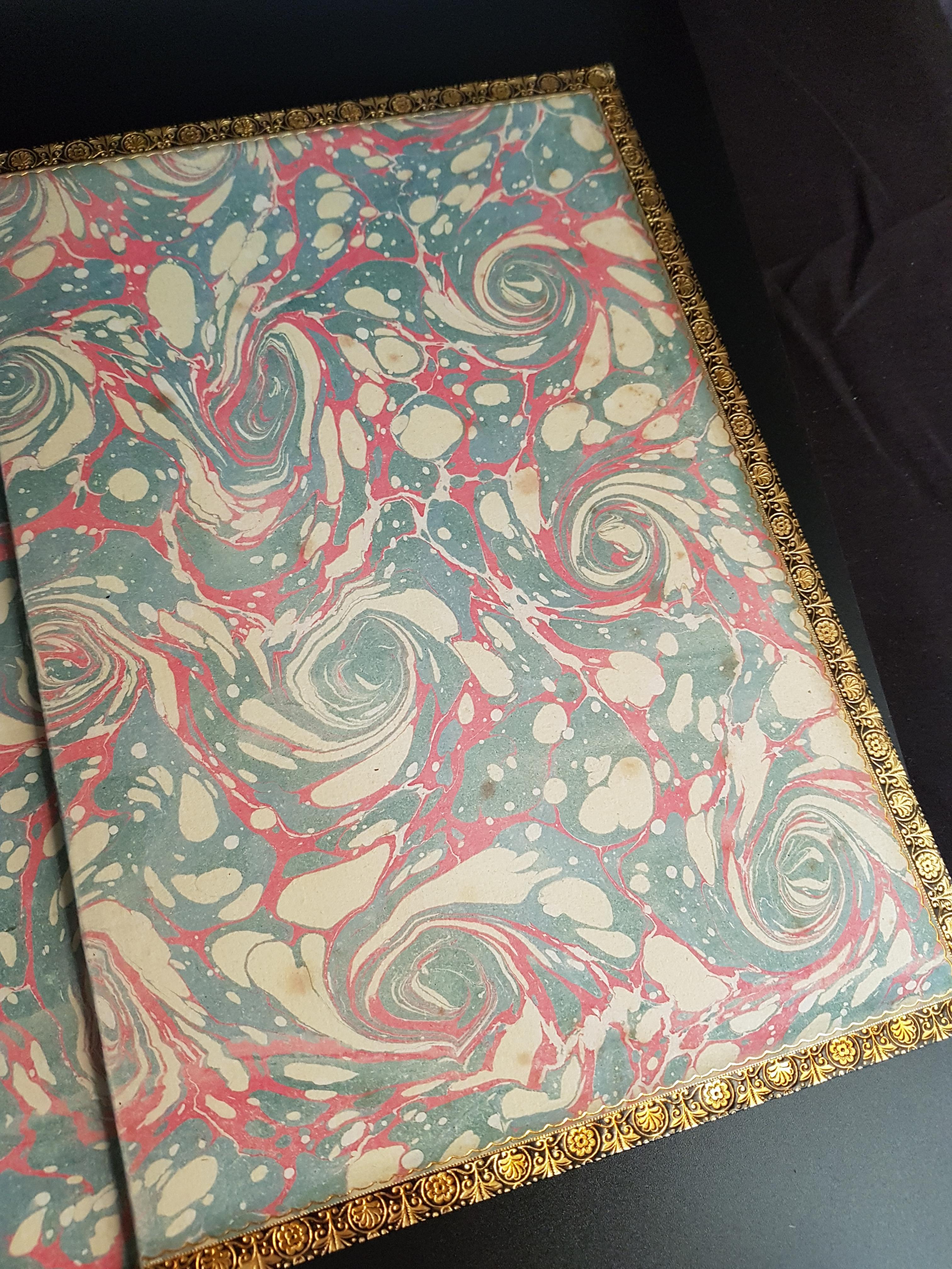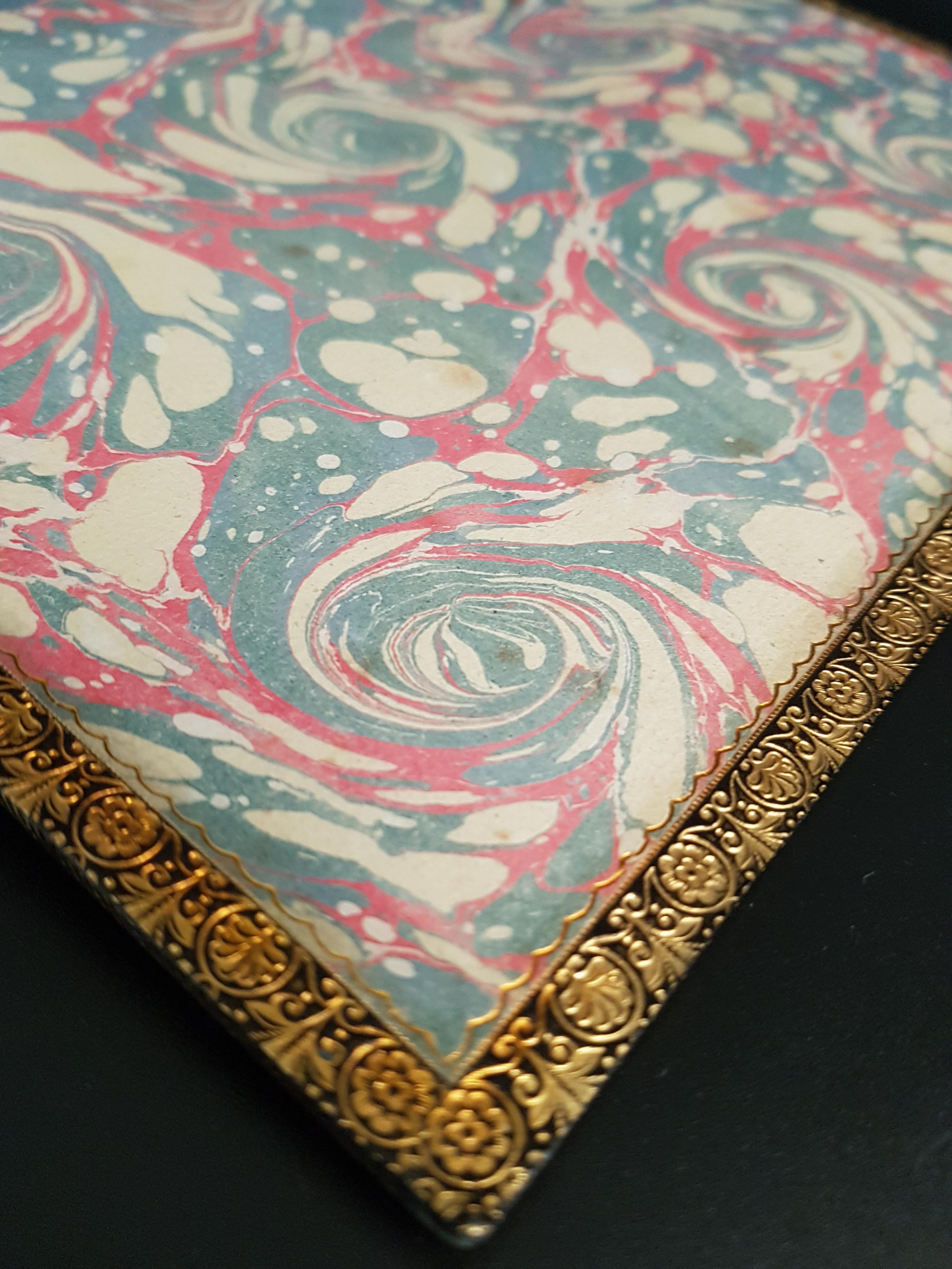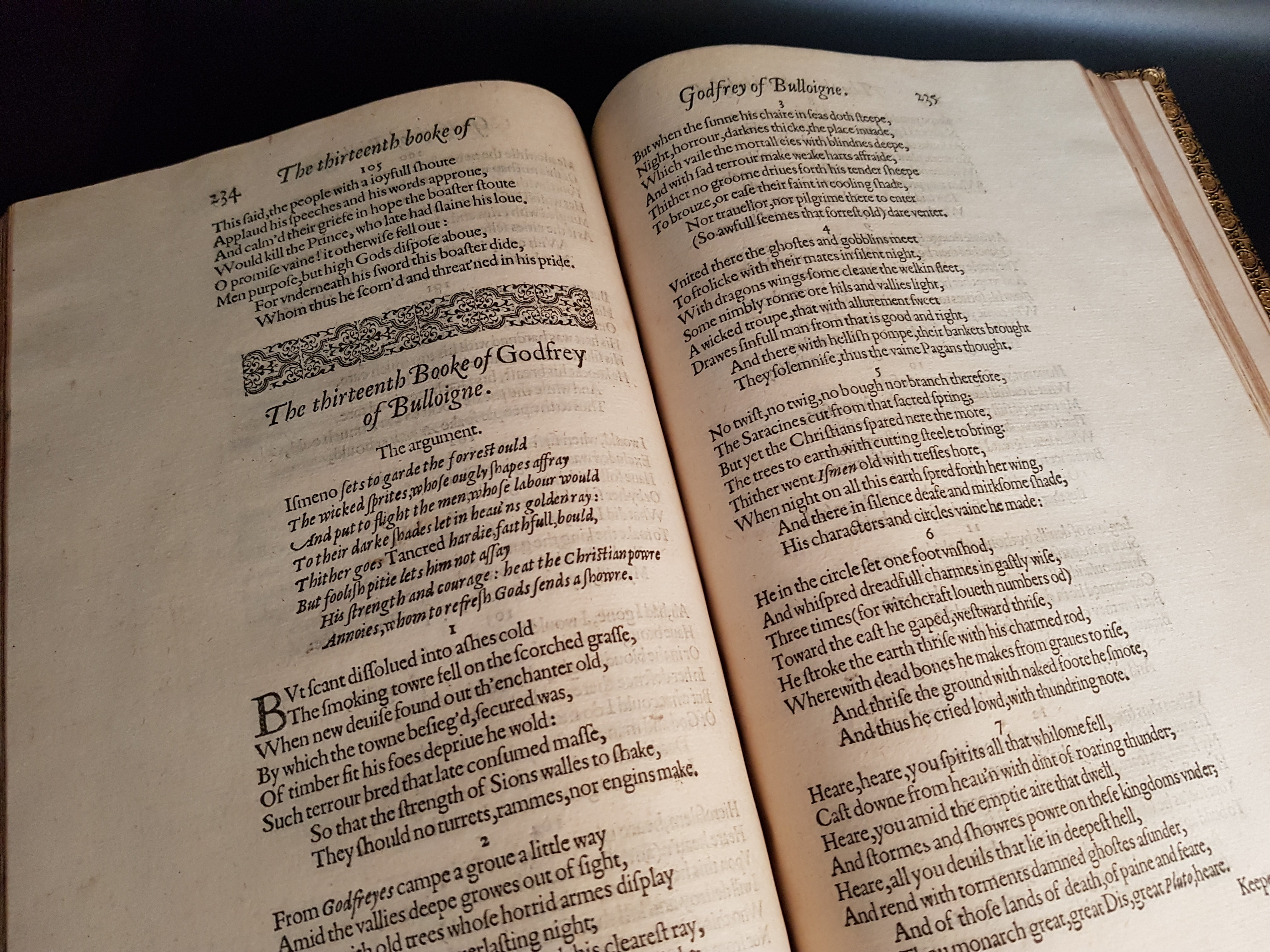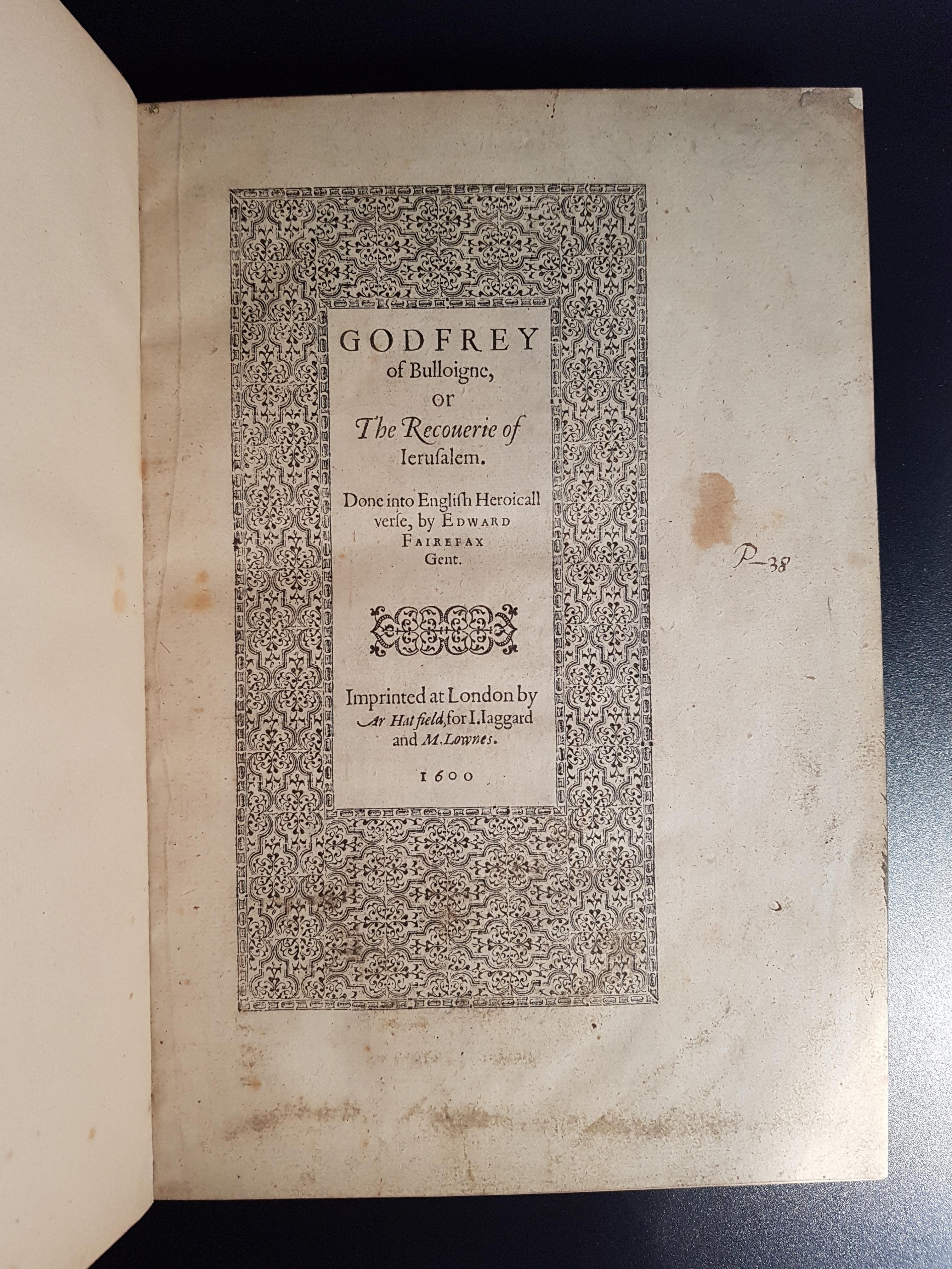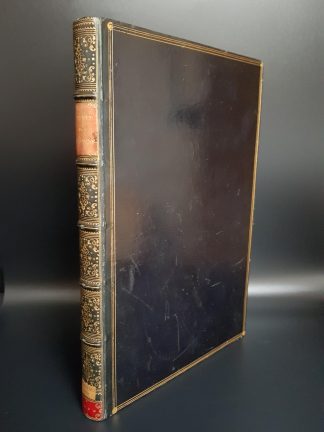TASSO, Torquato
Godfrey of Bulloigne, or The recouerie of Ierusalem. Done into English heroicall verse, by Edward Fairefax Gent.
London, by Ar. Hatfield, for I. Iaggard and M. Lownes, 1600£11,000.00
FIRST EDITION, first issue. Folio. [viii], 392. A , B-2K , 2L . Roman letter, some Italic. Title within wide typographical border, woodcut head and tail-pieces, typographical ornaments, modern bookplates on pastedown and f.ep. Title a little dusty with small stain in outer blank margin, shelf mark P-38 in early hand, a little dust soiling and minor ink stains in margins of first few leaves, verso of last dusty, the occasional thumb mark or minor stain. A fine, crisp, large paper copy, in handsome C19th dark blue calf by Zaehnsdorf, covers bordered with a triple blind rule, stopped at corners with gilt sun tool, spine with gilt ruled raised bands, richly gilt in compartments with scrolled and pointillé tools, red and tan morocco labels gilt, edges and inner dentelles richly gilt, marbled endpapers, a.e.g.
A remarkable copy, on large paper, of the first edition, first issue, of the hugely popular and influential translation into English by the English poet Fairfax of Tasso’s Jerusalem Delivered. Fairfax’s was the first complete translation, though Richard Carew had produced a translation of the first five books “Torquato Tasso’s Jerusalem Delivered is one of the great Italian epics, an influential and immensely popular piece. .. There have been many translations of Tasso’s work, new ones continuing to appear at a steady rate…, but to speak of Tasso in English has, for four hundred years, been to speak of Edward Fairfax’s translation. .. The Elizabethan poet Fairfax did not make a great mark with his own verse (little of which survives), but his translation is an acknowledged masterpiece — of sorts. Fairfax’s “translation” is a fairly free one, taking more liberties than most translators care or dare to. There is considerable embellishment of the text, specifically with the addition of nouns and adjectives as Fairfax uses two — or three — words to repeat what Tasso expressed in one. Fairfax remains true to the story, but his language is much more sprightly (and the effect more dramatic — or at least melodramatic) than in Tasso’s original. Usually such translatorial interference does little to enhance a text, but Fairfax was a real poet and his English version, though a stretch as a translation, is an impressive English epic. Fairfax’s imprint was a strong and enduring one, and the reception of Tasso in the English-speaking world has been almost entirely through this rose-coloured version. There are few instances in English in which a single translation has taken so many liberties and yet been so influential. Fairfax follows Tasso’s ottava rima, faithfully preserving the rhyme scheme of the original .. for each stanza. Occasionally it is forced, with some creative word-twisting and occasional coining, but Fairfax proceeds vigorously and often lyrically. He has a poet’s ear for language, and even when he can not comfortably twist the Italian into English the verses are often powerful.” Literary Saloon.
“Fairfax’s relationship with Tasso’s Liberata is dynamic from the very beginning. Far from trying to mirror Tasso’s words and rhythm, Fairfax simplifies not only syntax and prosody, but also the whole rhetorical texture of Tasso’s epic. David Hume wrote of Fairfax’s achievement that it possessed ‘an elegance and ease, and at the same time [..] an exactness, which for that age are surprising. Each line in the original is faithfully rendered by a correspondent line in the translation.’ – but this judgment does not pass the test of a careful critical examination.” Massimiliano Morini ‘Tudor Translation in Theory and Practice.’
Torquato Tasso (1544–1595) was one of the greatest Italian poets of the late Renaissance, the son of Bernardo Tasso, a poet and courtier. In 1560 he read law in Padua where he met the humanist Sperone Speroni, under whose guidance he studied Aristotle’s “Poetics”. In 1565 Tasso entered the service of the House of Este. While revising his poem “Gerusalemme Liberata”, he developed a persecution mania which caused his incarceration in the hospital of Santa Anna (1579–86).
ESTC S117565. STC 23698. Pforzheimer, 1001. Lowndes. “We do not know a translation in any language that is to be preferred to this, in all the essentials of poetry” Grolier ‘Langland to Wither’ 96.In stock


